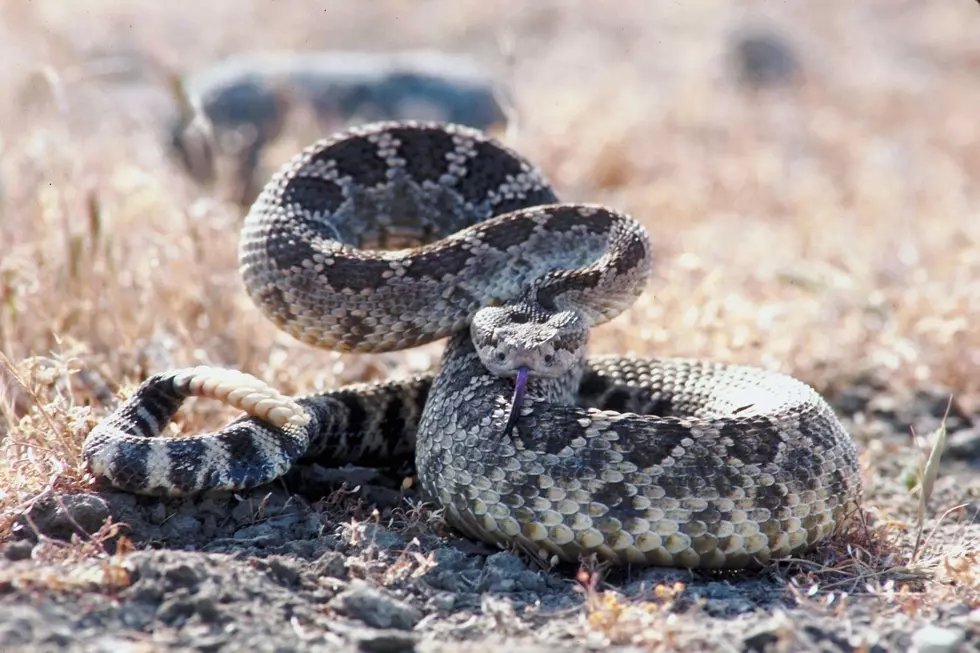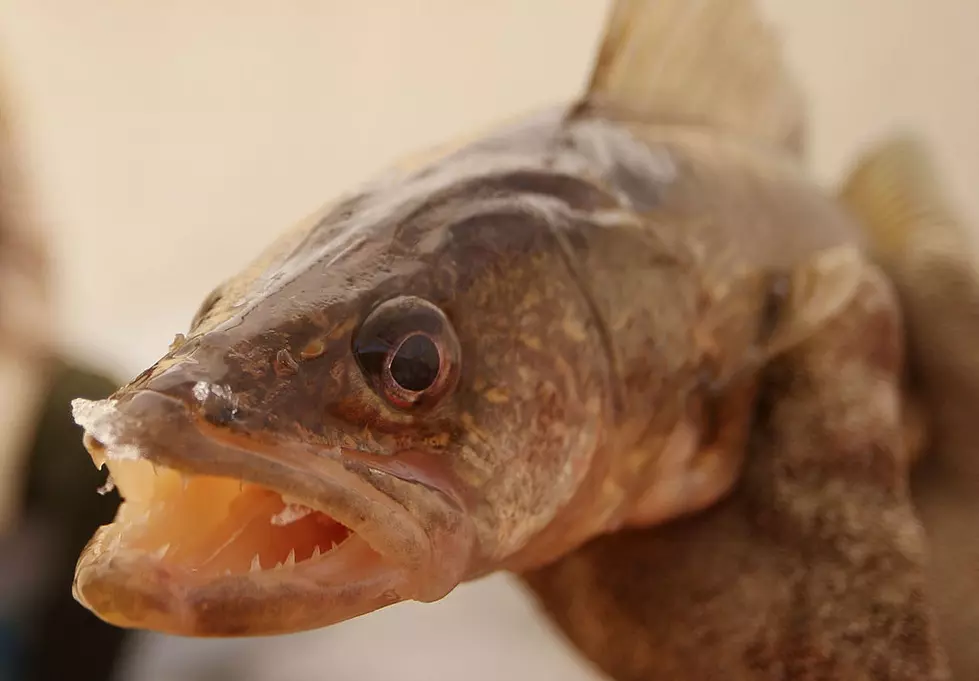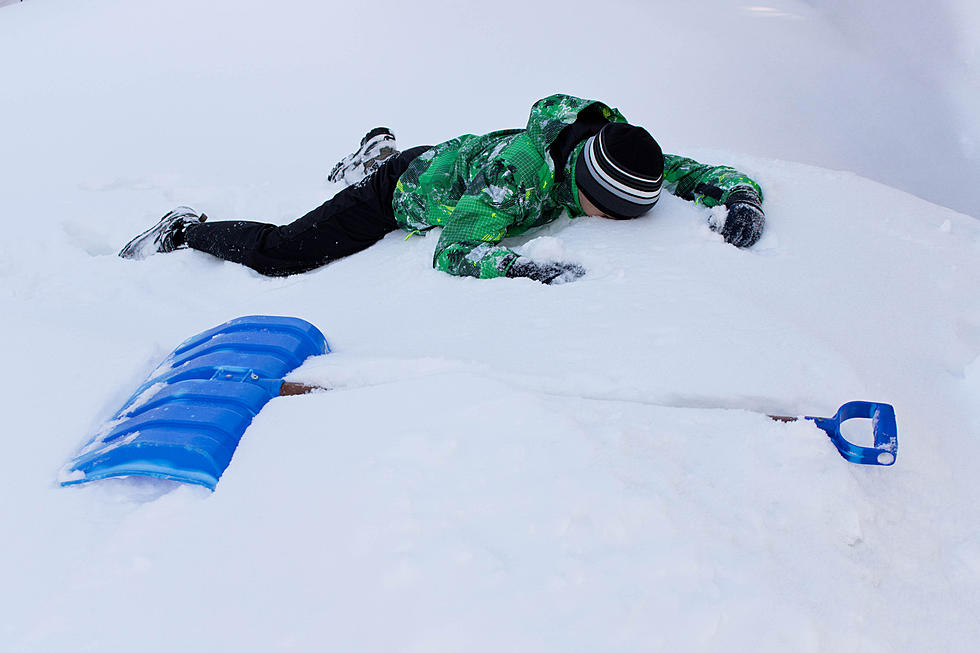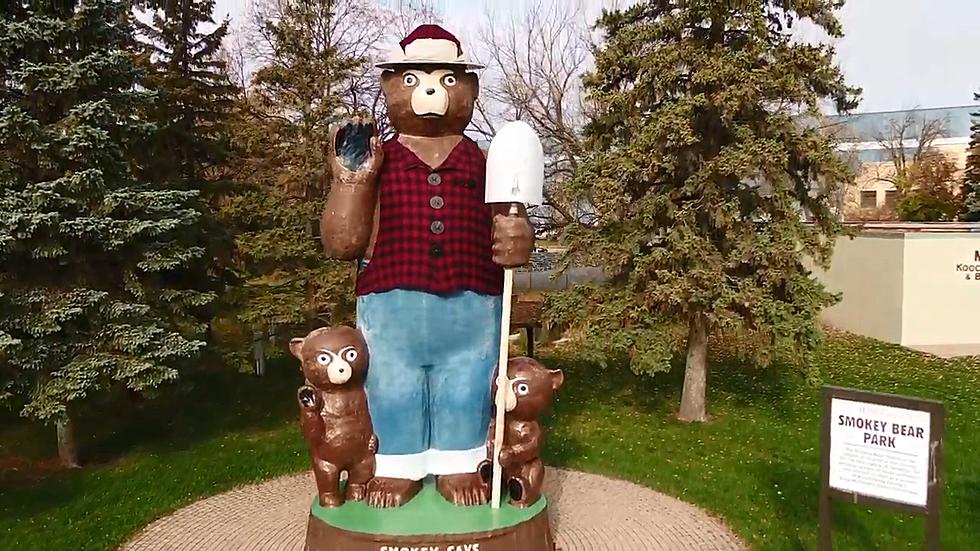
Sakakawea Statue Taken Down? At Least Spell Her Name Right!
Lewis and Clark? Yep. Sacagawea? I'm sorry...who?
I'll get to the whole Sakakawea versus Sacagawea thing in a bit...but they took her statue down this weekend along with Confederate Generals in Charlottesville Virginia. Good for "them".
CHARLOTTESVILLE, VIRGINIA - JULY 10: Workers remove a statue of Confederate General Thomas "Stonewall" Jackson from the Charlottesville and Albemarle County Courthouse Historic District July 10, 2021 in Charlottesville, Virginia. Initial plans to remove the statue, and one of Robert E. Lee, four years ago sparked the infamous “Unite the Right” rally where 32-year-old Heather Heyer was killed. (Photo by Win McNamee/Getty Images)
One Confederate General another to go...
Charlottesville City Council Appropriates Million Dollars For The Removal Of Confederate Era Statues
CHARLOTTESVILLE, VIRGINIA - JULY 09: A statue of Confederate Gen. Robert E. Lee is shown in Market Street Park July 9, 2021 in Charlottesville, Virginia. Charlottesville’s City Council voted unanimously this week to appropriate $1 million for the removal, covering or storage of the statue, in addition to two other statues, one of Confederate Gen. Thomas “Stonewall” Jackson and one of Meriwether Lewis, William Clark and Shoshone interpreter Sacagawea. (Photo by Win McNamee/Getty Images)
"There Goes the Robert E. Lee"...The Band- The Night They Drove Ol' Dixie Down.
But hey! Why pick on Sakakawea/Sacagawea and Lewis and Clark?
I'm sorry readers I couldn't find a better cleared photo to display...but to see her questionable portrayal in the actual Virginia statue from a better angle..just click right here.
So now maybe we're in the same conversation.
That's obviously a subservient position for a women to be in with the "greater men" looking forward. Supporters say she is "tracking"...well she should be doing that ahead of them and not cowering by their side. So how about a little Sakakawea/Sacagawea respect? Here ya go...
Why, that wasn't so hard...was it?
WASHINGTON - OCTOBER 17: A tourist in the Rotunda of the U.S. Capitol looks at a recently unveiled statue of the Shoshone American Indian woman Sakakawea, October 17, 2003 in Washington, DC. Sakakawea guided Lewis and Clark on their expedition in 1804-1806 in the Dakotas and west to the Pacific Ocean. It is said that she helped protect the expedition from harm and rescued important records from an overturned canoe. (Photo by Mike Theiler/Getty Images)
Native ladies are doing it for themselves! So since they had a million dollars to remove some statues, they figured they'd take out the Lewis and Clark and their dog statue as well. It wasn't a knee-jerk reaction...here's the long timeline leading to the removal.
I'm good with all that.
So let's move to the important debate of SAKAKAWEA VERSUS SACAGAWEA! From Sacagawea facts.net.
They seem to support "Sakakawea' although their website name implies differently...
Sacagawea's name - Sacajawea - Sakakawea
Sacagawea's name was since the beginning a matter of a great dispute. Correct spelling, pronunciation, and etymology of the woman's name is still matter of great debate. Widely accepted spelling of her name as it is used today comes from independently constructed form of two Hidatsa Indian words found in a dictionary titled Ethnography and Philology of the Hidatsa Indians as "tsa-ka-ka, noun; a bird," and "mia [wia, bia], noun; a woman. Although not closely following Hidatsa spelling, the pronunciation is quite similar and the Geographic Board acknowledged the name to be a Hidatsa word meaning "Bird Woman."
The name Sacajawea or Sacajewea, is said to be derived from Shoshone Saca-tzaw-meah, meaning "boat puller" or "boat launcher". This is the preferred spelling used by the Lemhi Shoshone people and probably that's what the Hidatsa captors merely reinterpreted existing Shoshone name in their own language, and pronounced it in their own dialect they heard a name that approximated "tsakaka" and "wia", and interpreted it as "bird woman", substituting the hard "g/k" pronunciation for the softer "tz/j" sound that did not exist in the Hidatsa language.
The usage of this spelling almost certainly originated from the use of the "j" spelling by Nicholas Biddle, who annotated the Lewis and Clark Expedition's journals for publication in 1814. This usage became more widespread with the publication of the 1902 novel, The Conquest: The True Story of Lewis and Clark, written by Eva Emery Dye.
Although the spelling Sacajawea was used until late 20th century, the use of it subsided and it is considered to be mistakenly pronounced. Due to the fact that it was long in usage, the "soft j" stayed in pronunciation to the majority of Americans. The term for 'boat' in Shoshoni is saiki, but the rest of the alleged compound would be incomprehensible to a native speaker of Shoshoni.
Sakakawea is the official spelling of her name according to the Three Affiliated Tribes, which include the Hidatsa, and is widely used throughout North Dakota.
It is interesting that Lewis and Clark had more than eight versions of her name in their journals. Clark used Sahkahgarwea, Sahcahgagwea, Sarcargahwea and Sahcahgahweah, while Lewis used Sahcahgahwea, Sahcahgarweah, Sahcargarweah and Sahcahgar Wea. What is certain, that both explorers wrote letter "G" in the third syllable and that is the way name was most frequently pronounced.
Lewis tried to give his rendition of the spelling of her name and also its meaning. His journal entry for May 20, 1805, reads: "a handsome river of about fifty yards in width discharged itself into the shell river... this stream we called Sah-ca-gah-we-ah or bird woman's River, after our interpreter the Snake woman."
However, Sacajawea or Sacagawea or Sakakwea, it is the same woman.
ARE YOU STILL HERE?
Wow...so here's what Wikipedia says...
A long-running controversy has related to the correct spelling, pronunciation, and etymology of the Shoshone woman's name. Linguists working on Hidatsa since the 1870s have always considered the name's Hidatsa etymology essentially indisputable. The name is a compound of two common Hidatsa nouns: cagáàga ([tsakáàka], 'bird') and míà ([míà], 'woman'). The compound is written as Cagáàgawia ('Bird Woman') in modern Hidatsa orthography, and pronounced [tsakáàkawia] (/m/ is pronounced [w] between vowels in Hidatsa). The double /aa/ in the name indicates a long vowel, while the diacritics suggest a falling pitch pattern.
Hidatsa is a pitch-accent language that does not have stress; therefore, in the Hidatsa pronunciation all syllables in [tsaɡáàɡawia] are pronounced with roughly the same relative emphasis. However, most English speakers perceive the accented syllable (the long /aa/) as stressed. In faithful rendering of Cagáàgawia to other languages, it is advisable to emphasize the second, long syllable, rather than the last, as is common in English.[32]
The name has several spelling traditions in English. The origin of each tradition is described in the following sections.
Sacagawea
Sacagawea (/səˌkɑːɡəˈwiːə/) is the most widely used spelling of her name, pronounced with a hard "g" sound, rather than a soft "g" or "j" sound. Lewis and Clark's original journals mention Sacagawea by name seventeen times, spelled eight different ways, each time with a "g". Clark used Sahkahgarwea, Sahcahgagwea, Sarcargahwea, and Sahcahgahweah, while Lewis used Sahcahgahwea, Sahcahgarweah, Sahcargarweah, and Sahcahgar Wea.
The spelling Sacagawea was established in 1910 by the Bureau of American Ethnology as the proper usage in government documents. It would be the spelling adopted by the U.S. Mint for use with the dollar coin, as well as the U.S. Board on Geographic Names and the National Park Service. The spelling is also used by numerous historical scholars.[33]
Sakakawea
Sakakawea (/səˌkɑːkəˈwiːə/) is the next most widely-adopted spelling, and is the most-often accepted among specialists.[34] Proponents say the name comes from the Hidatsa tsakáka wía ('bird woman').[35][36] Charbonneau told expedition members that his wife's name meant "Bird Woman," and in May 1805 Lewis used the Hidatsa meaning in his journal:
[A] handsome river of about fifty yards in width discharged itself into the shell river… [T]his stream we called Sah-ca-gah-we-ah or bird woman's River, after our interpreter the Snake woman.
Sakakawea is the official spelling of her name according to the Three Affiliated Tribes, which include the Hidatsa. This spelling is widely used throughout North Dakota (where she is considered a state heroine), notably in the naming of Lake Sakakawea, the extensive reservoir of Garrison Dam on the Missouri River.
The North Dakota State Historical Society quotes Russell Reid's 1986 book Sakakawea: The Bird Woman:[37]
Her Hidatsa name, which Charbonneau stated meant "Bird Woman," should be spelled "Tsakakawias" according to the foremost Hidatsa language authority, Dr. Washington Matthews. When this name is anglicized for easy pronunciation, it becomes Sakakawea, "Sakaka" meaning "bird" and "wea" meaning "woman." This is the spelling adopted by North Dakota. The spelling authorized for the use of federal agencies by the United States Geographic Board is Sacagawea. Although not closely following Hidatsa spelling, the pronunciation is quite similar and the Geographic Board acknowledged the name to be a Hidatsa word meaning "Bird Woman.
Irving W. Anderson, president of the Lewis and Clark Trail Heritage Foundation, says:[9]
[T]he Sakakawea spelling similarly is not found in the Lewis and Clark journals. To the contrary, this spelling traces its origin neither through a personal connection with her nor in any primary literature of the expedition. It has been independently constructed from two Hidatsa Indian words found in the dictionary Ethnography and Philology of the Hidatsa Indians (1877), published by the Government Printing Office.[38] Compiled by a United States Army surgeon, Dr. Washington Matthews, 65 years following Sacagawea's death, the words appear verbatim in the dictionary as "tsa-ka-ka, noun; a bird," and "mia [wia, bia], noun; a woman.
Sacajawea
The name Sacajawea or Sacajewea (/ˌsækədʒəˈwiːə/), in contrast to the Hidatsa etymology, is said to have derived from Shoshone Saca-tzaw-meah, meaning 'boat puller' or 'boat launcher'.[9] It is the preferred spelling used by the Lemhi Shoshone people, some of whom claim that her Hidatsa captors transliterated her Shoshone name in their own language, and pronounced it according to their own dialect.[39] That is, they heard a name that approximated tsakaka and wia, and interpreted it as 'bird woman', substituting their hard "g/k" pronunciation for the softer "tz/j" sound that did not exist in the Hidatsa language.[39]
The use of this spelling almost certainly originated with Nicholas Biddle, who used the "j" when he annotated the journals of the Lewis and Clark Expedition for publication in 1814. This use became more widespread with the publication in 1902 of Eva Emery Dye's novel The Conquest: The True Story of Lewis and Clark. It is likely that Dye used Biddle's secondary source for the spelling, and her highly popular book made this version ubiquitous throughout the United States (previously most non-scholars had never even heard of Sacagawea).[40]
Rozina George, great-great-great-great-granddaughter of Cameahwait, says the Agaidika tribe of Lemhi Shoshone do not recognize the spelling or pronunciation Sacagawea. Schools named in the interpreter's honor and other memorials erected in the area surrounding her birthplace use the spelling Sacajawea:[41]
The Lemhi Shoshone call her Sacajawea. It is derived from the Shoshone word for her name, Saca tzah we yaa. In his Cash Book, William Clark spells Sacajawea with a "J". Also, William Clark and Private George Shannon explained to Nicholas Biddle (Published the first Lewis and Clark Journals in 1814) about the pronunciation of her name and how the tz sounds more like a "j". What better authority on the pronunciation of her name than Clark and Shannon who traveled with her and constantly heard the pronunciation of her name? We do not believe it is a Minnetaree (Hidatsa) word for her name. Sacajawea was a Lemhi Shoshone not a Hidatsa.
Idaho native John Rees explored the 'boat launcher' etymology in a long letter to the U.S. Commissioner of Indian Affairs written in the 1920s.[9] It was republished in 1970 by the Lemhi County Historical Society as a pamphlet entitled "Madame Charbonneau" and contains many of the arguments in favor of the Shoshone derivation of the name.[39][9]
The spelling Sacajawea, although widely taught until the late 20th century, is generally considered incorrect in modern academia. Linguistics professor Dr. Sven Liljeblad from the Idaho State University in Pocatello has concluded that "it is unlikely that Sacajawea is a Shoshoni word.… The term for 'boat' in Shoshoni is saiki, but the rest of the alleged compound would be incomprehensible to a native speaker of Shoshoni."[9] The spelling has subsided from general use, although the corresponding "soft j" pronunciation persists in American culture.
WHEW!
So Sakakawea it is...thanks for your help y'all!
Sorry about that crappy statue...I bet it took a lot of work to finish.
10 Least Expensive North Dakota Cities To Live In
More From US 103-3









